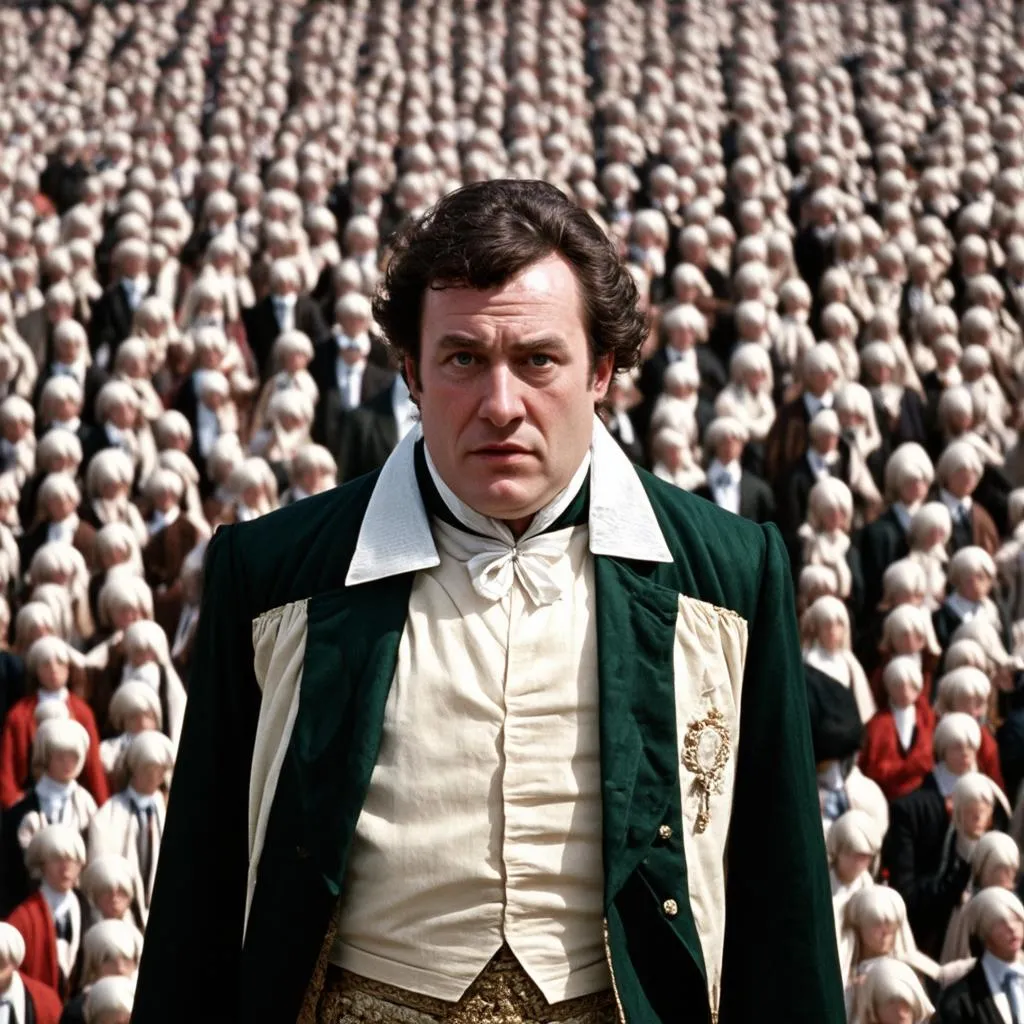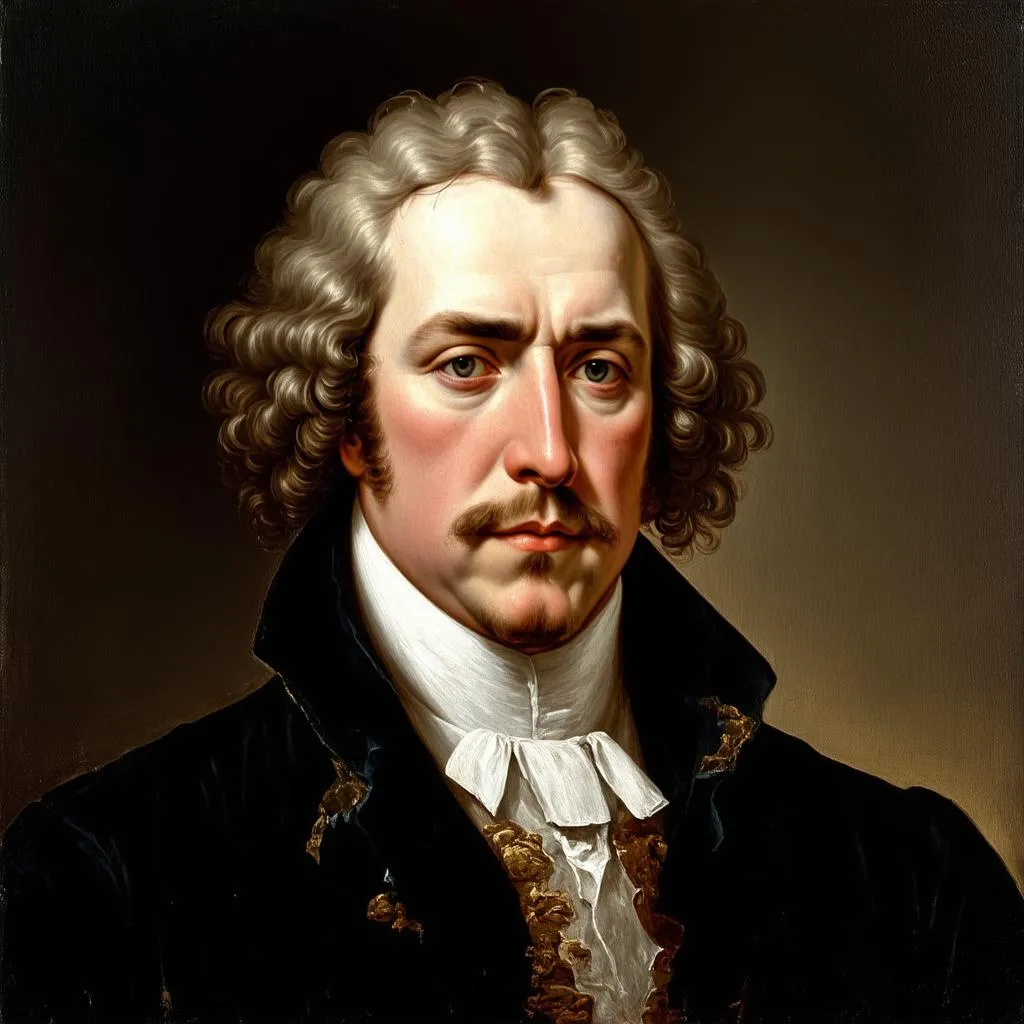Have you ever dreamt of escaping to faraway lands, encountering strange creatures, and witnessing societies completely different from our own? That’s exactly the kind of journey Jonathan Swift takes us on in his satirical masterpiece, “Gulliver’s Travels.” While it’s often perceived as a fantastical adventure story, particularly enjoyed by younger readers, “Gulliver’s Travels” holds deeper meaning. The question is, why did Swift write such a seemingly bizarre yet captivating tale? Let’s delve into the heart of this literary puzzle.
Unmasking the Satire: Swift’s Social Commentary
“Gulliver’s Travels” wasn’t just a flight of fancy; it was Swift’s sharp commentary on the political, social, and even scientific follies of 18th-century Europe. Imagine yourself stepping into a world miniature in size – Lilliput – just as Gulliver does. Swift uses the Lilliputians and their trivial conflicts to satirize the petty power struggles and religious disputes that plagued England at the time.
Think of it this way: what seems utterly ridiculous in Lilliput – like wars fought over which end to crack an egg – mirrors the absurdity of real-world conflicts that consumed nations. Swift held a mirror to his society, using satire to expose its flaws and hypocrisies.
Beyond Lilliput: Exploring Deeper Themes
As Gulliver journeys to other lands like Brobdingnag (a land of giants), Laputa (a floating island of absent-minded scientists), and the land of the Houyhnhnms (intelligent horses ruling over brutish Yahoos), Swift tackles more universal themes:
- The Limits of Reason: The Laputans, with all their scientific advancements, are completely detached from reality, showcasing the dangers of prioritizing intellect over practicality and human connection.
- The Nature of Humanity: By contrasting the noble Houyhnhnms with the crude Yahoos (who resemble humans in their basest instincts), Swift questions what it truly means to be human. Are we inherently rational beings or simply driven by primal desires?
 Gulliver in Lilliput
Gulliver in Lilliput
A Timeless Mirror: Relevance to Modern Society
“Gulliver’s Travels” resonates even today. We see echoes of Lilliputian absurdity in our own political landscapes, and the themes of unchecked scientific ambition and the duality of human nature are just as relevant as ever.
Just as travelers seek meaning and understanding through their journeys, Swift encourages us, the readers, to embark on a journey of introspection. By exaggerating and satirizing the flaws of his time, Swift prompts us to examine our own societies and ourselves with a critical eye.
FAQs: Unpacking the Mystery of “Gulliver’s Travels”
1. Was “Gulliver’s Travels” intended only for adults?
While the fantastical elements appeal to younger readers, the satirical layers and deeper themes make it a multi-layered work intended for mature audiences as well.
2. Is “Gulliver’s Travels” based on Swift’s own travels?
While Swift himself was a traveler, “Gulliver’s Travels” is fictional. However, his experiences and observations of different cultures likely influenced his writing.
3. Why is “Gulliver’s Travels” considered a classic?
Its enduring themes, brilliant use of satire, and thought-provoking exploration of human nature have cemented its place as a timeless classic.
Travelcar.edu.vn: Your Guide to Literary Adventures
Just as Gulliver’s travels opened his eyes to new worlds, exploring the world of literature can broaden our understanding and challenge our perspectives. If you’re intrigued by the ideas presented in “Gulliver’s Travels” and want to delve deeper into literary analysis, check out the insightful resources on travelcar.edu.vn.
From understanding literary devices to exploring different genres, travelcar.edu.vn can be your compass as you navigate the vast and fascinating world of literature.
 Portrait of Jonathan Swift
Portrait of Jonathan Swift
Your Turn to Explore
“Gulliver’s Travels” is more than just an adventure story; it’s a call to action, prompting us to think critically about the world around us. What other hidden meanings can you uncover in Swift’s masterpiece? Share your thoughts and interpretations in the comments below.